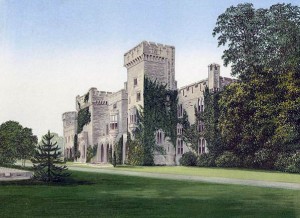
For over a month now I haven’t posted here, partly due to poor time-management, but even more due to my intensifying obsession with starting a garden. Anyway, the garden is largely started, and I’ll be posting pictures soon. But I’ve come at this interest from several angles.
My mom earned a certificate in landscape design, and has always been an avid gardener. I remember several vegetable gardens we worked when I was growing up, growing rows of corn, beans, peas and then my moms own choice of trees, shrubs, and flowers that decorate my parents’ house today. For a long time, I had little inclination for this work myself, and was happy to enjoy other peoples’ efforts.
Then, in 2005, some friends and I founded the Gothic Funk movement with a series of parties. Our discussion of the identity of this project came to encompass an avant-garde orientation toward the techniques of creating art, but with a more intuitive and optimistic orientation than the postmodern void. In seeking to update romantic paradigms, we found ourselves looking at the origins of the original romantic movement, and how, fascinatingly, the same people who were turning aesthetic philosophy on its head were also obsessed with landscape design. At even a glance, you see a meticulous attention to landscape in the writing of such early gothic (and proto-romantic) luminaries as Horace Walpole, Ann Radcliffe, Matthew Lewis, and William Beckford. They had fully absorbed the Longinian ideal that “great thoughts, strong emotions, certain figures of thought and speech, noble diction, and dignified word arrangement” indicated the presence of sublimity; the presence of “great conceptions.” To this day, such notions of the sublime crop up in art with gothic tropes, from Batman to the work of writers like Joyce Carol Oates. But gothicism also made an indelible mark on garden design in the evolution of the British picturesque style.
I hope to write more about this in the days and weeks to come. It really is quite a striking idea that powerful art and notions of powerful nature are bound in such fundamental, if superficially dissimilar, activities as writing and gardening. And it also connects to my firm belief that an updated gothic and romantic conception of the world today is significant to the arts moving forward, and in their most ambitious capacities as critics and judges of politics, economics, society, and culture.